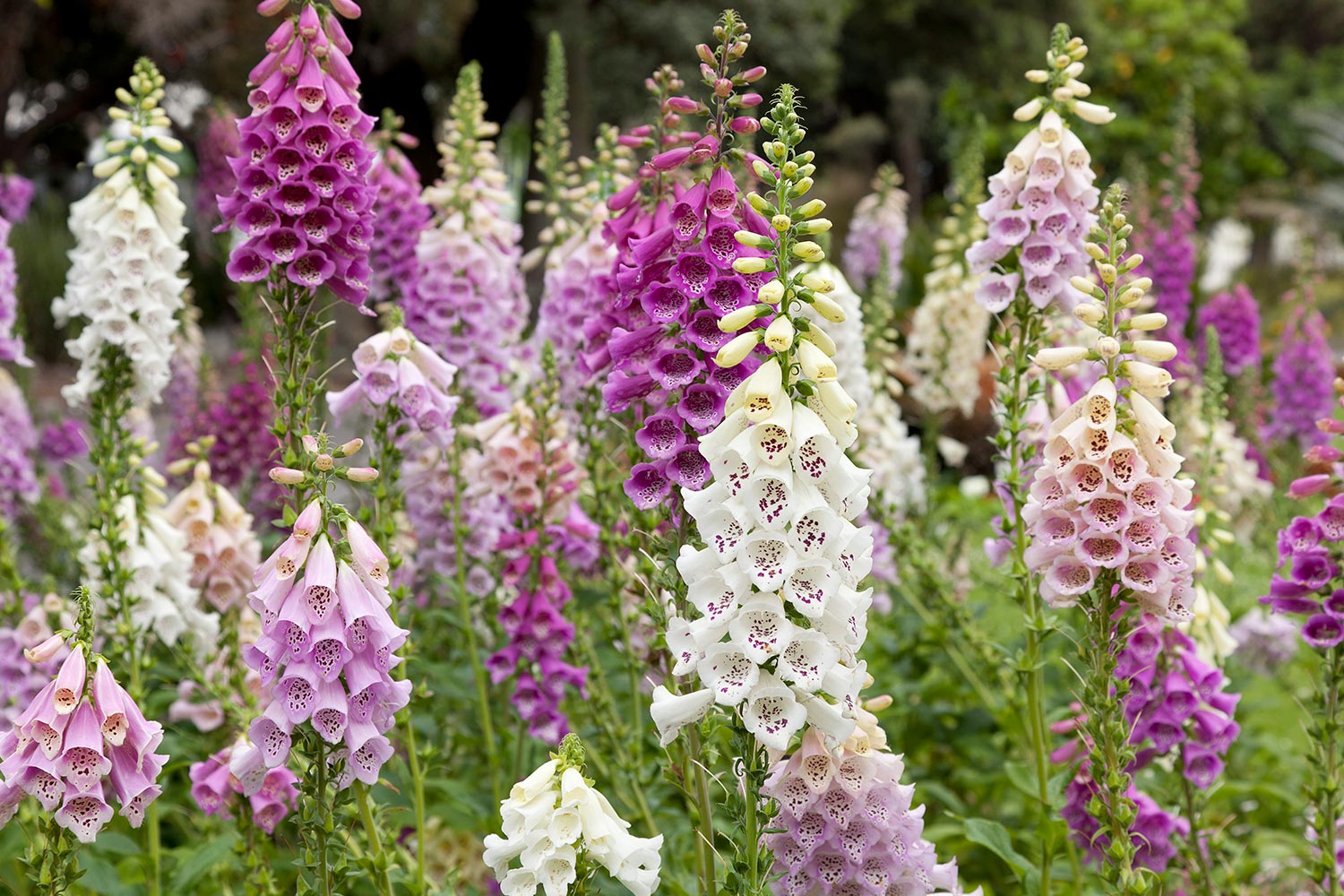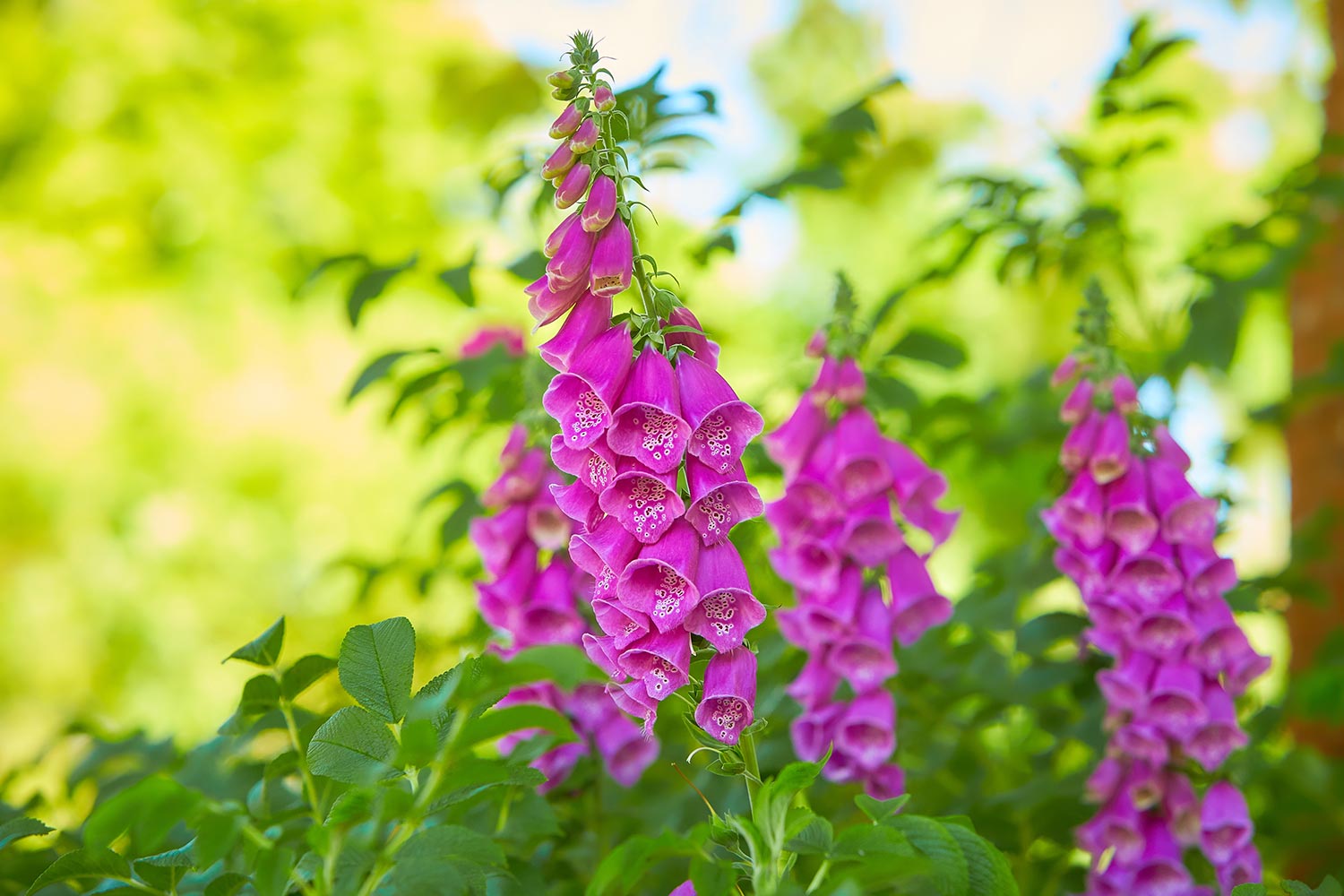Figuring out how to maintain a lush, healthy garden can feel like an impossible undertaking. Do you think it may be time to transplant the foxglove flowers in your yard but don't know when the "best" time to do this is? Should you even be transplanting foxgloves? We will discuss these questions below.
If you're ready to transplant a foxglove, make sure your plant is too. Generally, foxgloves do best when moved during early-mid spring and are relatively easy to pull up and re-plant.
To transplant a foxglove, you need to loosen its roots by inserting a spade straight into the soil. This should be around four inches from the flower.
You can then rock the spade back and forth, which will help ease your foxglove out of the ground.
As we begin, we will cover all things foxgloves and discuss when and how to transplant them. Whether you're new to this flower species or have too many popping up in the wrong places, we're here to help. With that said, let's dive right into this topic!
![Transplanting foxglove seedlings into soil in summer garden using shovel, When To Transplant Foxglove [And How To]](https://gardentabs.com/wp-content/uploads/2022/06/When-To-Transplant-Foxglove-.png)
What Is The Best Time Of Year To Transplant Foxglove?
Ideally, you want to transplant a foxglove during the early springtime. Like many flowers, foxgloves pop up right as the weather becomes warm, which can mean unwanted plants around your garden.
For that reason, it's a good idea to locate any new foxgloves and gently relocate them to your desired spot. Foxglove, specifically, is very good at self-seeding.

They can become somewhat invasive within a property if you let them, so transplanting is a common practice. Again, this won't be super challenging, as foxgloves have shallow root systems.
You shouldn't run into any problems moving a foxglove plant as long as you're gentle. Moreover, foxgloves don't require much force to pull from the ground, so be as careful as you can.
As we mentioned, using a spade, you can usually remove a foxglove from the ground. All you need to do is move it gently from side to side, which will loosen the dirt around your plant's roots.
However, you want to ensure the weather is warm and the sun is out before transplanting. If not, you risk your newly relocated flower getting sick and even dying.
How Do You Transplant Foxglove?
For those ready to transplant their foxglove(s), this won't be too hard. To begin:
- Find and prepare the new location for your foxglove.
- Locate your current flower and dig a few inches around it.
- Grab a spade, and insert it four inches from your plant in the ground.
- Move the spade side to side, loosening the dirt around the foxglove.
- Once your plant is loose, remove it from the ground.
- Dig a new hole, ideally 2-3 times the width of your plant's roots.
- Place the foxglove and any attached soil into the new spot.
- Fill around your plant with fresh soil and pat it down.
- Water your transplanted foxglove immediately.
- Spread fresh compost/organic material over your foxglove.
It's also essential to keep a newly transplanted foxglove moist. You want to water it daily or every other day, depending on the weather, to keep it healthy.
Furthermore, regardless of variety, a transplanted flower will be more sensitive for the first few weeks in its new location. That is why it's best to wait until the weather is warm, so your foxglove won't go into shock.
Can I Transplant A New Foxglove?

Yes! You can transplant a newer foxglove (and it's better to do so). As we mentioned earlier, this flower species does incredibly well after being transplanted and can handle it at a very young age.
Generally, as long as it's spring or summer, transplanting a newer/younger foxglove will be problem-free. However, you want to ensure the new location it's in is good.
For example, if your current foxglove looks like it's outgrown its pot or area, you need to make sure its future space is bigger.
The same goes for foxgloves currently in the shade, which may have trouble growing and need to be transplanted to a sunnier spot.
The best conditions for foxglove are warm, damp, and full of direct sunlight. Imagine spending the time transplanting your flower(s) only to put them in a problematic location, so do your research beforehand.
Should I Divide Foxgloves?
If you want to divide a foxglove plant, this should be safe to try. Typically, foxgloves separate better before they bloom, so before mid-spring.
For that reason, we recommend dividing foxgloves right as the warmer weather starts, but before you notice any budding or flowering.
This plant species loves space. The more ground a foxglove has, the better it will grow and re-seed, so it's a great option for filling a yard.
With that said, you don't want to divide and transplant foxgloves too often. Remember, this is a living thing, so the more you mess with one, the more likely an issue will arise.
You also want to ensure the conditions in your foxglove's new location are ideal. That means there should be direct sun, more space, and easy access to water.
If you can check all those boxes, you will be able to divide foxglove easily and without worry!
Can I Transplant Foxglove In The Summer?

Yes, you can usually transplant a foxglove in the early summer. Most times, a foxglove will react best to moderate temperatures during its transplant, so make sure not to do this in the sweltering heat.
You also want to make sure that the temperatures and air conditions aren't so hot and dry that your new plant won't be able to adjust after the move.
Typically, any time after June will be too hot for transplanting foxglove. Therefore, if you miss the spring deadline but need to move your flower(s) before fall, try to get this done in early June.
Waiting too long into summer can result in stunted or burned foxgloves, which may even stop them from flowering. The last thing anyone wants is for their flowers to not bloom after a transplant, so keep this in mind before making any decisions.
Should I Dig Up Foxgloves After Flowering?
No. We don't generally recommend transplanting or diving foxgloves once they flower. As we mentioned, early spring is the best time to do these things before any blooms happen.
Although foxglove is a hearty flower, that doesn't mean you should be rough with it. Also, moving a foxglove before the winter can stunt if not kill it entirely.
Considering that a plant needs a somewhat established root system to handle cooler, harsher seasons, digging a foxglove up too late in the year can put it at risk.
So, if you need to move your flower but it's already later spring or summer (or fall), we recommend waiting until next year.
Do Foxgloves Prefer Full Sun?

Yes, in general, foxgloves prefer full sun or partial shade. According to the University of Wisconsin, you should plant common foxglove somewhere with plenty of light or very minimal shade.
In addition, you want to ensure foxglove has nutrient-rich, damp soil. That said, foxglove will typically grow in any soil type, as long as it gets plenty of moisture and sunshine.
You may even need to stake taller foxglove varieties if they're in full sun, as they will grow pretty fast.
On the other hand, if you live somewhere warm in the spring/summer months, growing a foxglove in partial shade may be your best bet.
Although the flowering plant loves sun exposure, it doesn't want to bake in the heat every day for 2-3 months. The full sun is a better idea if you live somewhere with cooler, more moderate summer temperatures.
Again, this all comes down to your location, climate, and summer conditions.
Can You Grow Foxglove In The Shade?
If you try growing a foxglove in full shade, expect it to stay pretty petite and leggy. As we said above, this flower species loves full sun, meaning it won't grow well if it doesn't get enough.
Ideally, a foxglove should get at least four hours of direct sunlight each day. Whether this is in the morning or afternoon, it's crucial that your plant sees and feels the sun regularly.
Of course, not all gardens offer the same level of sun exposure. If you have many trees growing around your property or have a generally shady, cool property, then foxglove may not be for you.
On the other hand, if your yard sees daily sunlight for around four hours and you fertilize a foxglove routinely, it shouldn't be stunted or unhealthy.
Is Foxglove Easy To Grow?

Yes! Whether you decide to grow foxglove from seed or mature plant, it is pretty easy to manage. Besides being hardy, foxglove doesn't need too much attention.
This makes it perfect for those with busier schedules or larger properties. Furthermore, foxgloves are easy to move and divide, which is a significant advantage.
On top of that, foxgloves grow pretty quickly. Generally, they will spend their first year developing strong roots and foliage, ultimately flowering in year two.
To Finish
Whether you want to transplant a foxglove or grow one from seed, this plant is surprisingly hardy. From what we found, the best time to move foxglove is during the early spring, right as the temperatures warm up.
Generally, transplanting a foxglove plant is simple, as long as you're careful. We recommend using a spade and gently moving it back and forth in the ground to loosen your flower's roots.
Regardless, make sure to transplant and divide foxglove before the later summer, and don't be afraid to give it a whole section of your garden to fill.
Made it to the end? Check out these helpful related flower posts below!
